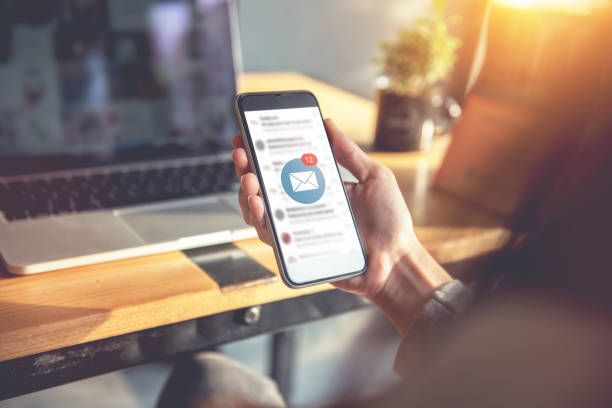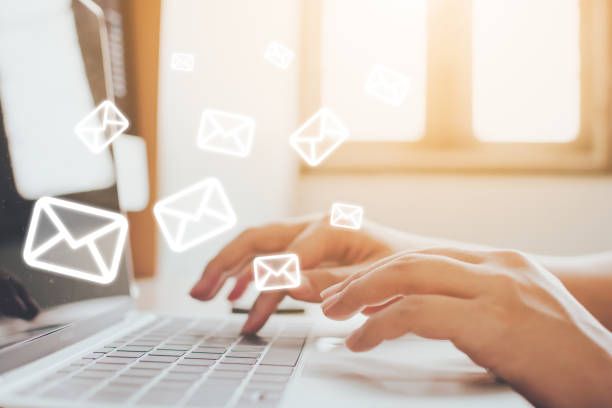Email marketing continues to be a crucial tool for businesses to connect with their audience, build relationships, and drive conversions. However, with the increasing volume of emails flooding inboxes, it's essential to stand out and capture your recipients' attention. In this comprehensive guide, we will share expert tips and strategies to help you elevate your email marketing game. Whether you're a beginner or an experienced marketer, these insights will empower you to create compelling emails that engage, convert, and generate remarkable results.
Craft Irresistible Subject Lines

The subject line is the gateway to your email, and it's your first opportunity to capture your recipients' attention. Here are some tips to make your subject lines irresistible:
a. Keep it concise: Aim for subject lines that are 50 characters or less to ensure they're fully visible on mobile devices.
b. Create a sense of urgency: Incorporate words like "limited time offer" or "exclusive deal" to create a sense of urgency and encourage immediate action.
c. Personalize whenever possible: Use dynamic tags to include the recipient's name or location in the subject line. Personalization can significantly improve open rates.
d. A/B test your subject lines: Test different subject lines to see which ones perform better. Analyze open rates and adjust your approach accordingly.
- Optimize Email Design and Layout:
The design and layout of your emails play a vital role in capturing and retaining your recipients' attention. Follow these tips to optimize your email design:
a. Keep it simple and focused: Use a clean and uncluttered design that highlights the most important elements of your message. Avoid overwhelming your readers with excessive graphics or too much text.
b. Use responsive design: Ensure your emails are mobile-friendly and adapt to different screen sizes. The majority of people now access their emails on mobile devices, so it's crucial to provide a seamless experience.
c. Incorporate eye-catching visuals: Use high-quality images, GIFs, or videos to engage your audience. Visual content can increase click-through rates and make your emails more memorable.
d. Pay attention to readability: Choose legible fonts, use appropriate font sizes, and utilize sufficient white space to improve readability. Make it easy for your readers to skim through your email and find the key information.

Personalize and Segment Your Email Campaigns

Personalization and segmentation are key to delivering relevant content to your subscribers. Consider the following tips:
a. Collect and leverage data: Gather relevant data about your subscribers, such as their demographics, preferences, and past interactions. Use this information to segment your audience and send targeted emails.
b. Personalize beyond the subject line: Personalization goes beyond using the recipient's name. Tailor the email content based on their interests, purchase history, or browsing behavior. Personalized emails have higher engagement rates.
c. Implement automated email workflows: Set up automated email workflows based on specific triggers or actions. For example, welcome new subscribers with a series of onboarding emails or send abandoned cart reminders to recover lost sales.
d. Test different email variations: Experiment with different email variations to identify what resonates best with your audience. Test different subject lines, content formats, and calls to action to optimize your campaigns.
Write Compelling Email Content

Great email content is essential for capturing your readers' attention and driving action. Consider these tips to create compelling email content:
a. Be concise and scannable: Keep your emails concise and easy to scan. Use short paragraphs, bullet points, and subheadings to improve readability.
b. Focus on the benefits: Clearly communicate the benefits your recipients will gain by taking action. Show them how your product or service can solve their problems or improve their lives.
c. Use persuasive language: Employ persuasive language that evokes emotions and prompts action. Use strong calls to action and create a sense of urgency to motivate your readers to click.
d. Test and optimize: Continuously test different elements of your email content, such as headlines, body copy, and images. Analyze the results and make data-driven decisions to optimize your content for better performance.
Measure, Analyze, and Refine:
To continually improve your email marketing efforts, it's essential to measure and analyze your campaign performance. Consider the following tips:
a. Track key metrics: Monitor metrics such as open rates, click-through rates, conversion rates, and unsubscribe rates. These metrics provide valuable insights into the effectiveness of your campaigns.
b. Conduct A/B testing: Test different variations of your emails to identify what resonates best with your audience. Test subject lines, email content, calls to action, and design elements to optimize your campaigns.
c. Use analytics tools: Leverage email marketing analytics tools to gain in-depth insights into your campaigns. Understand how recipients engage with your emails, which links they click, and what content performs best.
d. Continuously refine your strategy: Use the data and insights you gather to refine your email marketing strategy. Identify areas for improvement and implement changes to optimize your future campaigns.
Commonly Asked Questions:
Q1. How often should I send emails to my subscribers?
- The ideal email frequency varies depending on your audience and the nature of your business. It's important to strike a balance between staying top of mind and avoiding overwhelming your subscribers. Test different frequencies and monitor engagement metrics to determine the optimal email cadence for your audience.
Q2. How can I improve my email deliverability rates?
- To improve email deliverability, focus on maintaining a clean and engaged subscriber list, use double opt-in, avoid spam trigger words, personalize your emails, and monitor your sender reputation. Additionally, consider implementing email authentication protocols like SPF, DKIM, and DMARC.
Q3. What is the best time to send emails?
- The best time to send emails can vary depending on your audience and industry. Conduct A/B tests to determine when your subscribers are most responsive. Generally, sending emails during weekdays and avoiding peak hours can yield better results.
Q4. How can I increase my email open rates?
- To increase email open rates, craft compelling subject lines, personalize your emails, segment your audience, and consider re-engagement campaigns for inactive subscribers. Additionally, ensure your emails are optimized for mobile devices and regularly clean your subscriber list.
Q5. How can I reduce unsubscribes in my email campaigns?
- To reduce unsubscribes, focus on delivering valuable content, personalizing your emails, segmenting your audience, and respecting subscribers' preferences. Provide clear and easy-to-find unsubscribe options, and regularly review your email metrics to identify patterns or issues that may lead to high unsubscribe rates.
Conclusion
With the right strategies and tactics, email marketing can be a powerful tool for businesses to engage, convert, and nurture their audience. By implementing these expert tips, you can create compelling emails that stand out in crowded inboxes and drive remarkable results. Remember to continuously test, analyze, and refine your campaigns to optimize their performance. Embrace the power of email marketing and unlock its potential to fuel your business growth and success.

